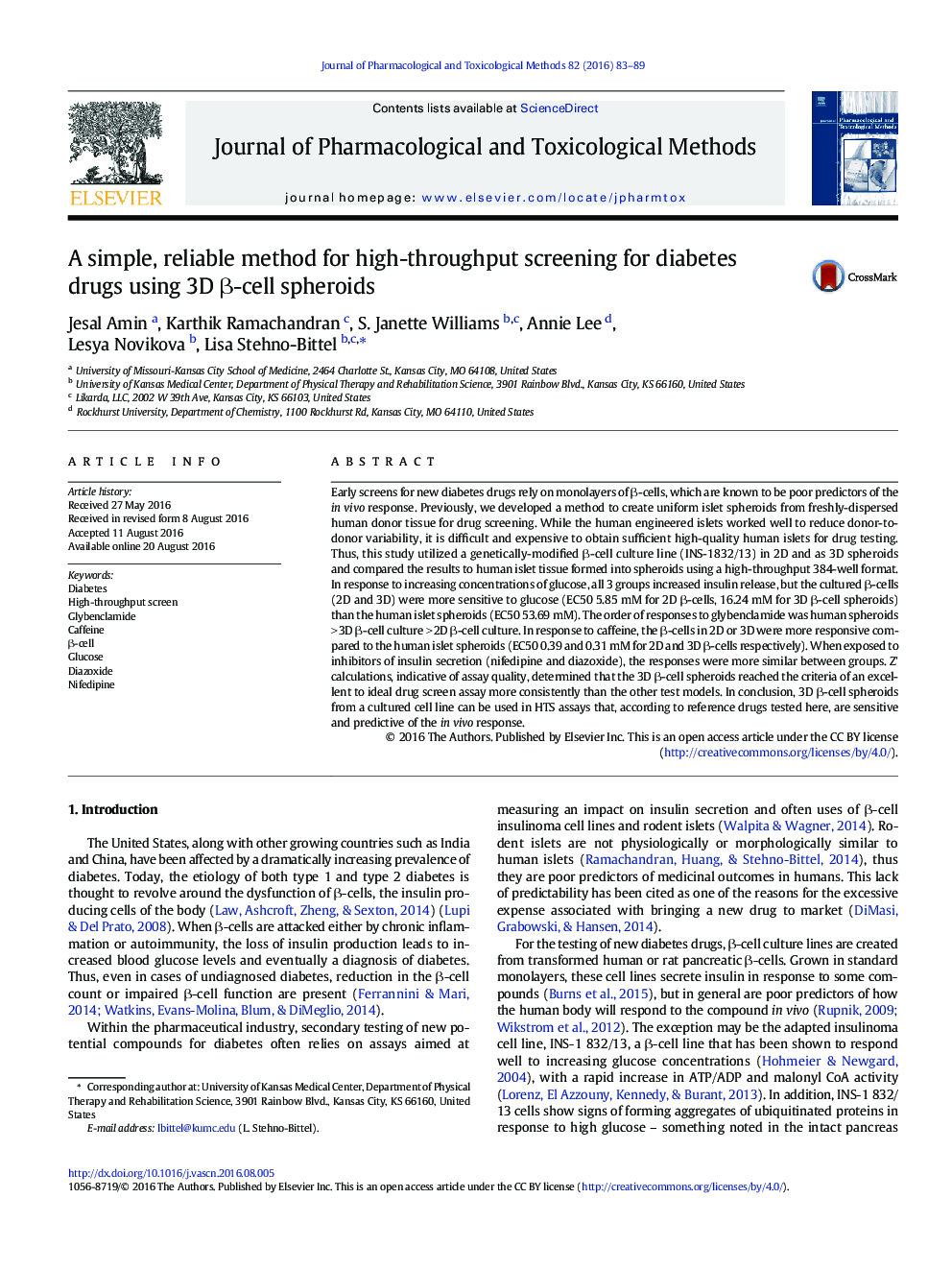| Article ID | Journal | Published Year | Pages | File Type |
|---|---|---|---|---|
| 5840412 | Journal of Pharmacological and Toxicological Methods | 2016 | 7 Pages |
Early screens for new diabetes drugs rely on monolayers of β-cells, which are known to be poor predictors of the in vivo response. Previously, we developed a method to create uniform islet spheroids from freshly-dispersed human donor tissue for drug screening. While the human engineered islets worked well to reduce donor-to-donor variability, it is difficult and expensive to obtain sufficient high-quality human islets for drug testing. Thus, this study utilized a genetically-modified β-cell culture line (INS-1832/13) in 2D and as 3D spheroids and compared the results to human islet tissue formed into spheroids using a high-throughput 384-well format. In response to increasing concentrations of glucose, all 3 groups increased insulin release, but the cultured β-cells (2D and 3D) were more sensitive to glucose (EC50 5.85 mM for 2D β-cells, 16.24 mM for 3D β-cell spheroids) than the human islet spheroids (EC50 53.69 mM). The order of responses to glybenclamide was human spheroids > 3D β-cell culture > 2D β-cell culture. In response to caffeine, the β-cells in 2D or 3D were more responsive compared to the human islet spheroids (EC50 0.39 and 0.31 mM for 2D and 3D β-cells respectively). When exposed to inhibitors of insulin secretion (nifedipine and diazoxide), the responses were more similar between groups. Z' calculations, indicative of assay quality, determined that the 3D β-cell spheroids reached the criteria of an excellent to ideal drug screen assay more consistently than the other test models. In conclusion, 3D β-cell spheroids from a cultured cell line can be used in HTS assays that, according to reference drugs tested here, are sensitive and predictive of the in vivo response.
